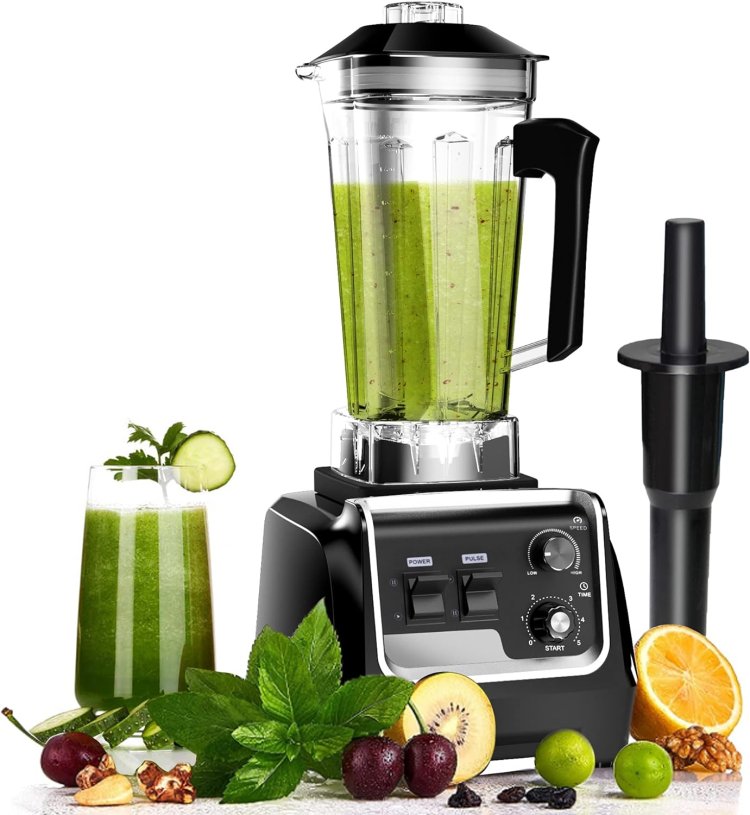Blender Tips for Creating Realistic Textures and Materials
Welcome to Kitchen Tips! Discover the latest in Kitchen Products, Guide tips and Review. Join us at Dmbsportscamp.com to embrace a lifestyle that protects our planet for future generations and Regular Update.
Share this Post to earn Money ( Upto ₹100 per 1000 Views )

Creating realistic textures and materials in Blender can elevate your 3D models and environments to a whole new level. Whether you’re working on a film project, video game, or even a product visualization, understanding how to craft detailed and lifelike textures is essential. Blender, a free and open-source 3D creation suite, offers a robust set of tools for texturing and material creation. However, achieving photorealistic results requires more than just slapping on an image texture or tweaking a shader.
In this blog post, we’ll explore Blender tips that can help you create more realistic textures and materials for your 3D projects. By focusing on the principles of realism and diving into Blender's tools, we will cover various techniques that will push your texturing skills to the next level.
Understanding the Basics of Materials and Shaders in Blender
Before diving into specific blender tips, it's crucial to understand the difference between a material and a texture in Blender. A material in Blender is a combination of shaders, colors, and textures that define how an object interacts with light. A shader controls how light bounces off the surface, while textures give detailed information like color, roughness, and displacement.
Blender’s Principled BSDF Shader is an excellent starting point for creating realistic materials. It’s based on the PBR (Physically-Based Rendering) model, which simulates how light interacts with real-world surfaces. When combined with high-quality textures, this shader can produce stunningly realistic results. Now, let’s dive into some of the best Blender tips for creating realistic textures and materials.
1. Start with High-Quality Textures
One of the fundamental Blender tips is to always use high-quality textures. The more detailed your texture maps (e.g., diffuse, normal, roughness, and displacement maps), the more realistic your final material will look. Poor-quality textures can result in a flat, artificial appearance, even if your material setup is perfect.
You can find high-resolution textures on websites like Textures.com, CC0Textures, and Poliigon. These sites provide free and paid options, allowing you to access high-quality images that will enhance your work.
When importing textures, ensure that they are correctly mapped to your object’s UV coordinates. Incorrect UV mapping can distort your textures, leading to unrealistic results.
2. Leverage the Power of Procedural Textures
Blender’s procedural textures offer incredible flexibility when creating materials. Procedural textures are generated by mathematical algorithms rather than image files, meaning they can scale infinitely without losing detail. Some of Blender's built-in procedural textures include Noise, Voronoi, Musgrave, and Wave textures.
Using procedural textures is especially helpful for creating surfaces like wood, marble, and concrete. You can mix these textures with image-based textures to create even more complex materials. Moreover, procedural textures are non-destructive, meaning you can adjust them at any time without needing to re-import or edit image files.
3. Master the Principled BSDF Shader
The Principled BSDF Shader is designed to simplify the material creation process by combining several shaders into one easy-to-use node. It’s Blender’s go-to shader for realistic PBR materials.
Here are some key settings within the Principled BSDF Shader that you should focus on:
- Base Color: This defines the base color of your material, often controlled by a texture map.
- Subsurface Scattering (SSS): Useful for materials like skin or wax, SSS simulates light scattering within the material.
- Roughness: Controls how smooth or rough a surface is. Lower values create a shiny, reflective surface, while higher values produce a matte finish.
- Metallic: For metallic surfaces like gold or steel, increasing the metallic value makes the surface reflect light like a metal.
- Clearcoat: Adds an additional layer of reflectivity, perfect for car paint or polished surfaces.
Understanding how to balance these settings will allow you to create realistic surfaces for virtually any material.
4. Use Normal and Bump Maps for Surface Detail
One of the most crucial Blender tips for creating realism is using normal and bump maps. These maps don’t change the geometry of an object but affect how light interacts with it, simulating small surface details like cracks, dents, and bumps.
-
Normal Maps: These are RGB maps that alter the way light behaves on an object, giving the illusion of depth and detail without adding extra geometry. You can use software like Substance Painter, Photoshop, or Blender’s built-in baking tools to generate normal maps.
-
Bump Maps: Unlike normal maps, bump maps are grayscale images. Lighter areas are interpreted as higher, while darker areas are lower. Bump maps are simpler to create but don’t provide as much detail as normal maps.
Using these maps can significantly increase the realism of your materials without impacting your scene's performance as much as adding actual geometry would.
5. Work with Roughness Maps for Realistic Reflections
Roughness maps are essential for controlling how light reflects off a surface. In real life, most surfaces aren’t perfectly smooth or glossy. Roughness maps provide variation across the surface of an object, making reflections more nuanced and realistic.
For example, a roughness map for a stone wall might show smooth areas where the stone has been polished over time, alongside rough patches where the surface is weathered. You can either download roughness maps or create them procedurally in Blender using noise or other texture nodes.
6. Use Displacement Maps for Geometry Detail
Displacement maps go a step further than normal and bump maps by actually altering the geometry of your object. Displacement maps move the vertices of an object based on a grayscale image, with lighter areas pushing vertices up and darker areas pushing them down.
While displacement maps create incredibly realistic results, they can increase your polygon count, so use them sparingly or combine them with bump/normal maps for the best performance. Blender’s Adaptive Subdivision feature (available with the Cycles renderer) helps optimize the use of displacement maps by adjusting the geometry detail based on the camera distance.

7. Experiment with Microdisplacement for Detailed Surfaces
Microdisplacement is a technique that adds fine details to the surface of your objects without the need for additional geometry. This method is particularly useful when working with materials like fabrics, carpets, or any surface with intricate small details.
To use microdisplacement in Blender, you need to enable experimental features under Render Settings and work with a Displacement output in the material nodes. Combining microdisplacement with procedural textures can create highly realistic materials without compromising the scene’s performance.
8. Use HDRIs for Realistic Lighting and Reflections
No matter how good your textures and materials are, they won't look realistic if your scene's lighting is lacking. One of the most impactful Blender tips for realism is using HDRIs (High Dynamic Range Images) for lighting. HDRIs contain real-world lighting data, which not only illuminates your scene more naturally but also provides accurate reflections.
Blender allows you to easily set up an HDRI environment in the World settings. By doing this, your materials will interact more realistically with the light, producing more accurate reflections and shading.
9. Tweak Your Material Settings for Different Render Engines
Blender offers two primary rendering engines: Cycles and Eevee. While Cycles is more physically accurate and better suited for realism, Eevee provides faster rendering times. Keep in mind that materials may behave differently depending on the engine you use. For instance, reflections and refractions in Eevee require additional setup, like enabling Screen Space Reflections.
Ensure that you’re testing your materials in the render engine you plan to use for your final output. Fine-tune settings like roughness, normal strength, and specular values to suit the engine.
10. Final Touches with Post-Processing
Even after you’ve set up perfect materials, don’t forget to apply final touches during post-processing. Blender’s Compositor allows you to add subtle effects like bloom, glare, and color correction, which can enhance the realism of your renders. A small amount of post-processing can significantly elevate the realism of your textures and materials.
Conclusion
Creating realistic textures and materials in Blender requires a blend of artistic skill and technical know-how. By following these Blender tips—such as using high-quality textures, mastering procedural techniques, and leveraging powerful shaders—you can dramatically improve the quality and realism of your 3D projects. Whether you’re a beginner or a seasoned Blender user, these techniques will help you achieve more lifelike results that stand out in any portfolio or project.
Happy blending!














